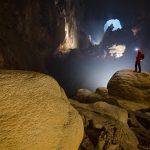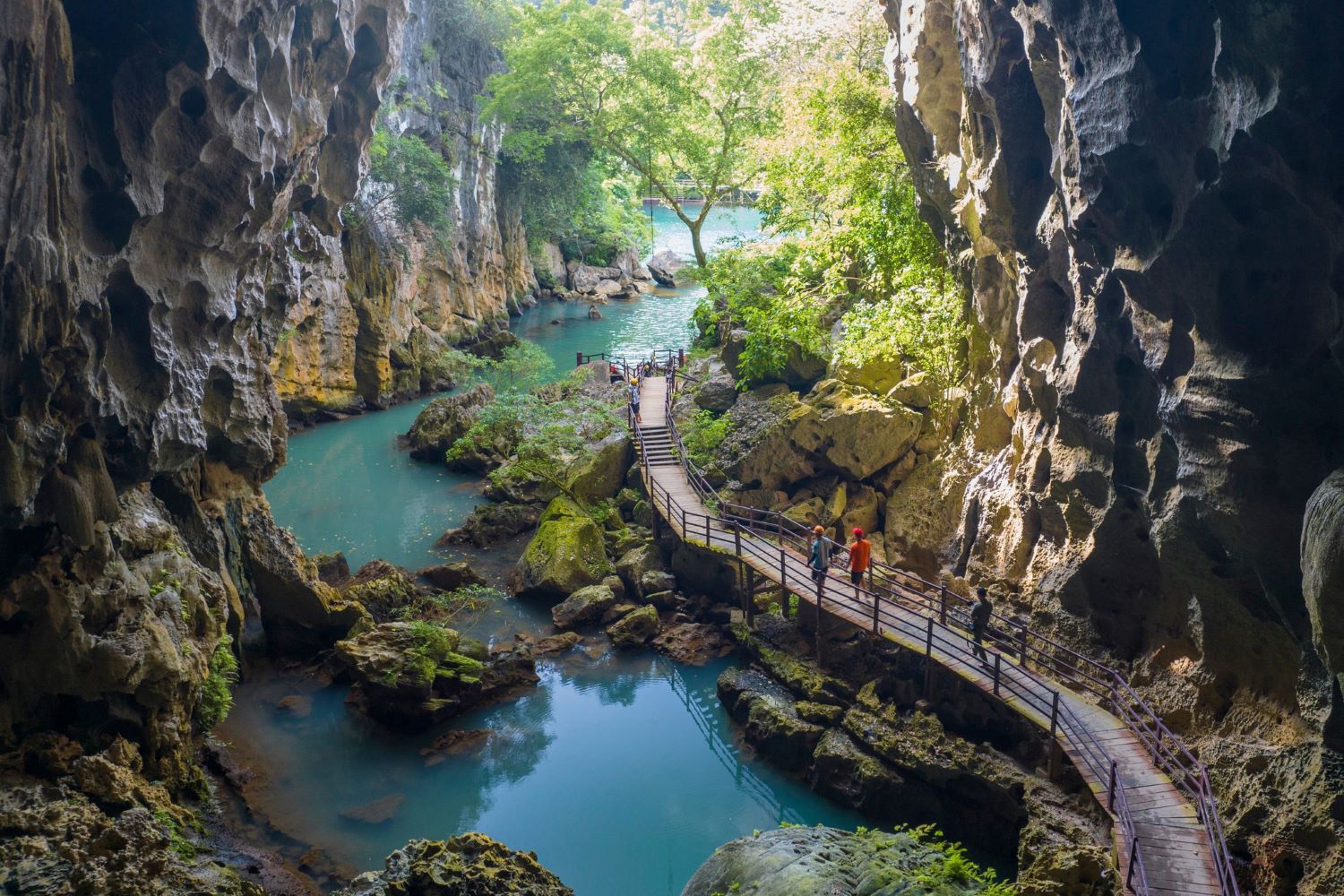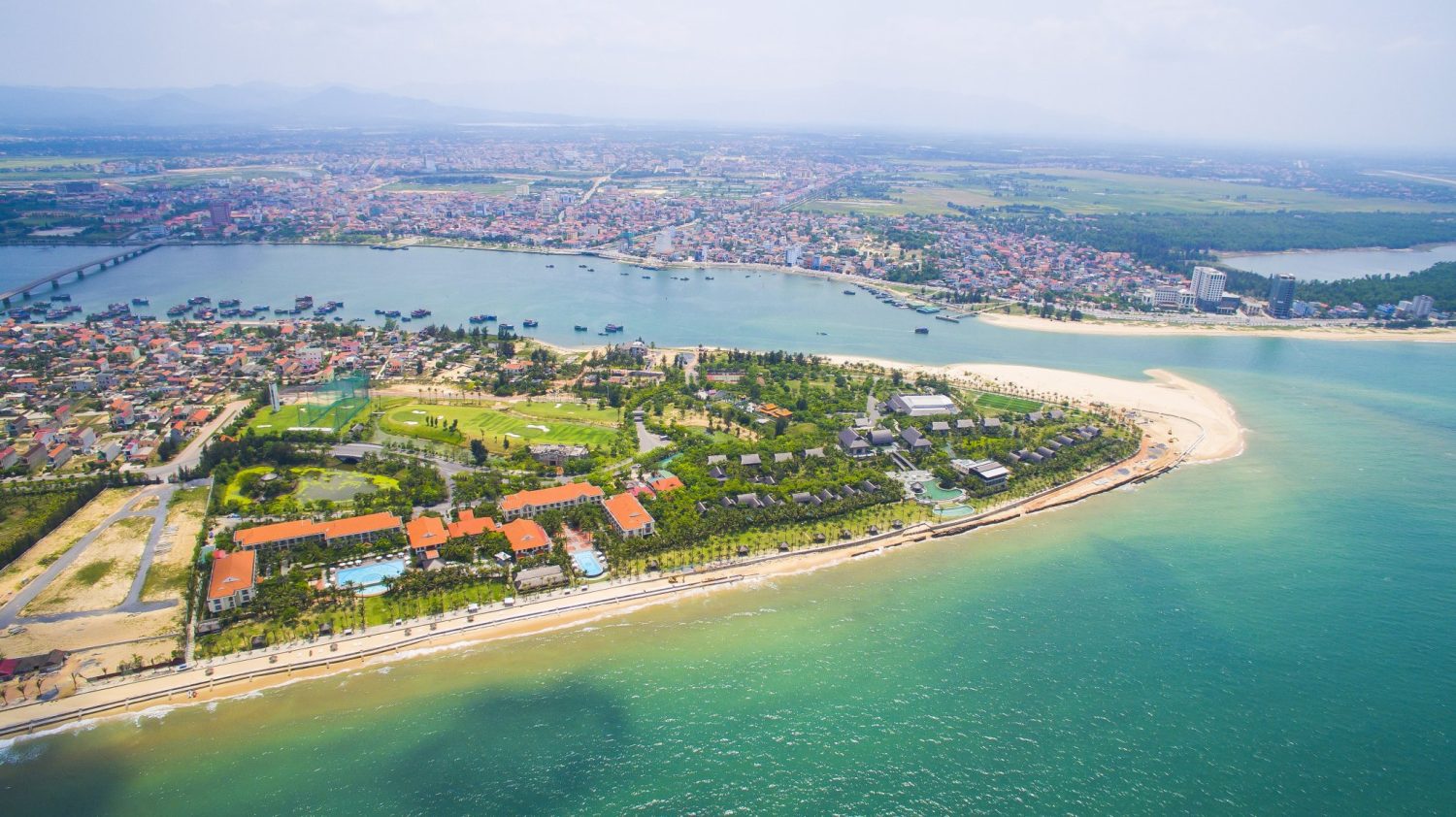MICE tourism is a rapidly growing sector in Vietnam. Despite its global presence for over 70 years, many still do not fully understand its significance and benefits. This article provides an in-depth look into MICE tourism and essential information to help you better grasp this specialized travel sector.
What is MICE tourism?
MICE tourism refers to a professional form of travel involving meetings, incentives, conferences, and exhibitions, organized for businesses, organizations, and communities. The term “MICE” stands for:
- Meetings
- Incentives
- Conferences
- Exhibitions
MICE tourism is a crucial part of the travel industry, contributing significantly to the economy and development of destinations. It requires high-quality infrastructure and professional support, including hotels, restaurants, and convention centers. MICE events can be both domestic and international, attracting businesses, experts, leaders, and VIP guests. It is considered a premium travel segment, bringing together top professionals from various industries in tailored environments.
A notable example of MICE tourism in Vietnam is the Da Nang Tourism Recovery Program 2022, which included event licensing support, welcome gifts, appreciation letters, ceremonial receptions, and police escorts for seamless logistics.
On a global scale, one of the major MICE events in 2023 was ILTM Asia Pacific, held at Marina Bay Sands, Singapore. This annual luxury travel trade show connects high-end travel service providers with luxury travel agencies, tour operators, and media worldwide.
According to Allied Market Research, the global MICE market was valued at $345.8 billion in 2021, with a compound annual growth rate (CAGR) of 15.2% projected for 2022-2031. With the resurgence of in-person MICE events and advancements in technology, the industry is expected to surpass $2 trillion within the next decade.
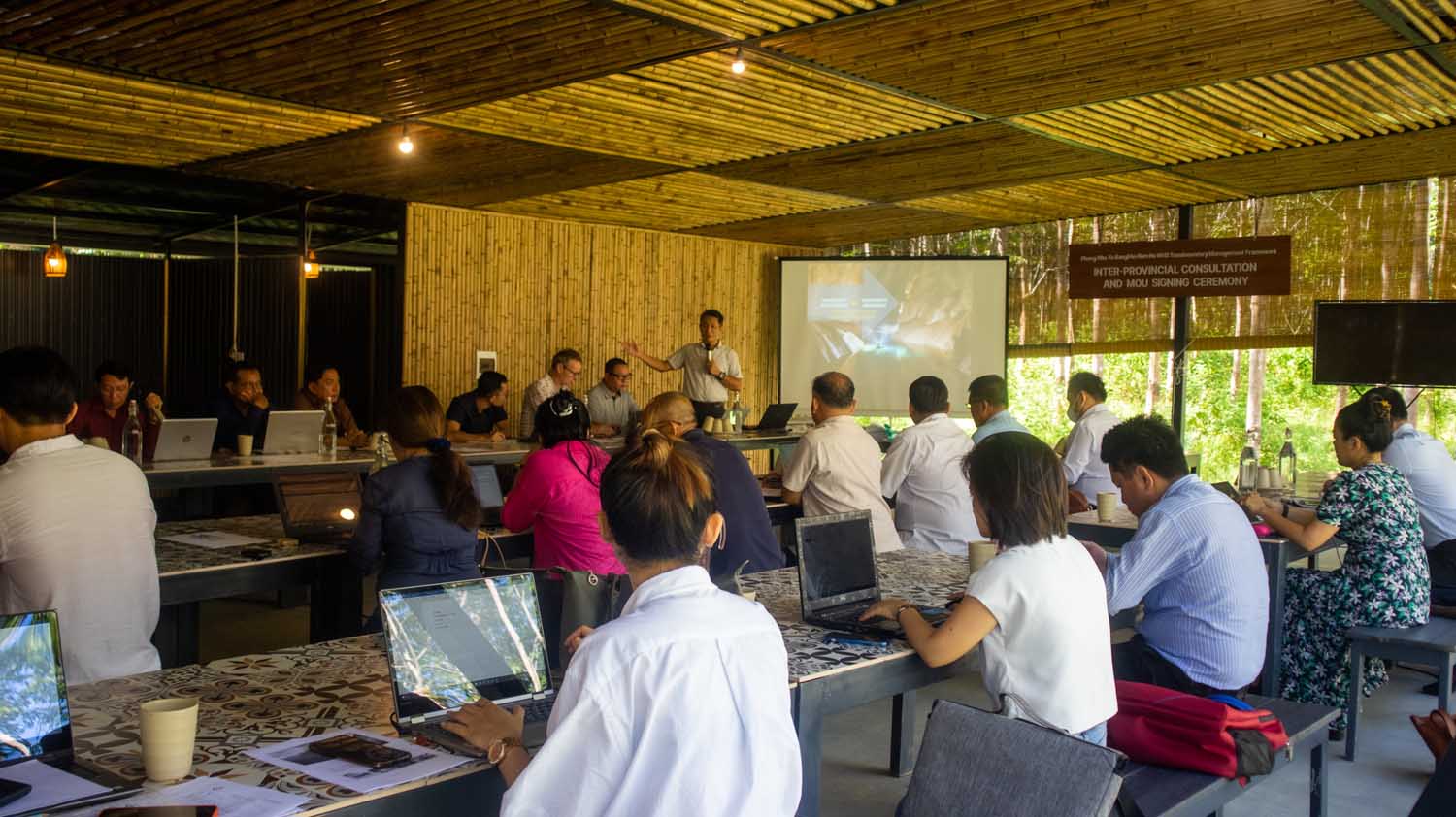
Key characteristics of MICE tourism
MICE groups often travel in large numbers (hundreds of participants) and incur significantly higher costs compared to regular tour groups. This is because international conference organizers typically book accommodations in 4- to 5-star hotels with premium services, and tours must be custom-designed to meet specific requirements. The MICE industry generates substantial revenue for the tourism sector.
Professional MICE contributes to socio-economic development. The purpose of MICE is to share experiences, visit and learn from production models, host employee recognition events, travel, and participate in conferences and exhibitions. Through MICE, employees are motivated to work more actively, enhance their capabilities, improve their skills, and expand their knowledge. Also, companies and their products gain widespread promotion.
MICE is an integrated service model that requires travel companies to provide comprehensive packages for entire groups. These services include transportation, accommodation, conference organization, team-building activities, sightseeing, and more. MICE operators compete to deliver professional event management services and improve travel expertise. This presents an opportunity for them to establish their position and brand within the tourism industry. The growth of the MICE sector drives the development of related services within the supply chain, such as catering, entertainment, shopping, restaurants, hotels, aviation, and human resources.
The benefits of MICE tourism include opportunities for networking, knowledge exchange, and business collaboration while providing a professional and modern environment for hosting successful events, conferences, and exhibitions.
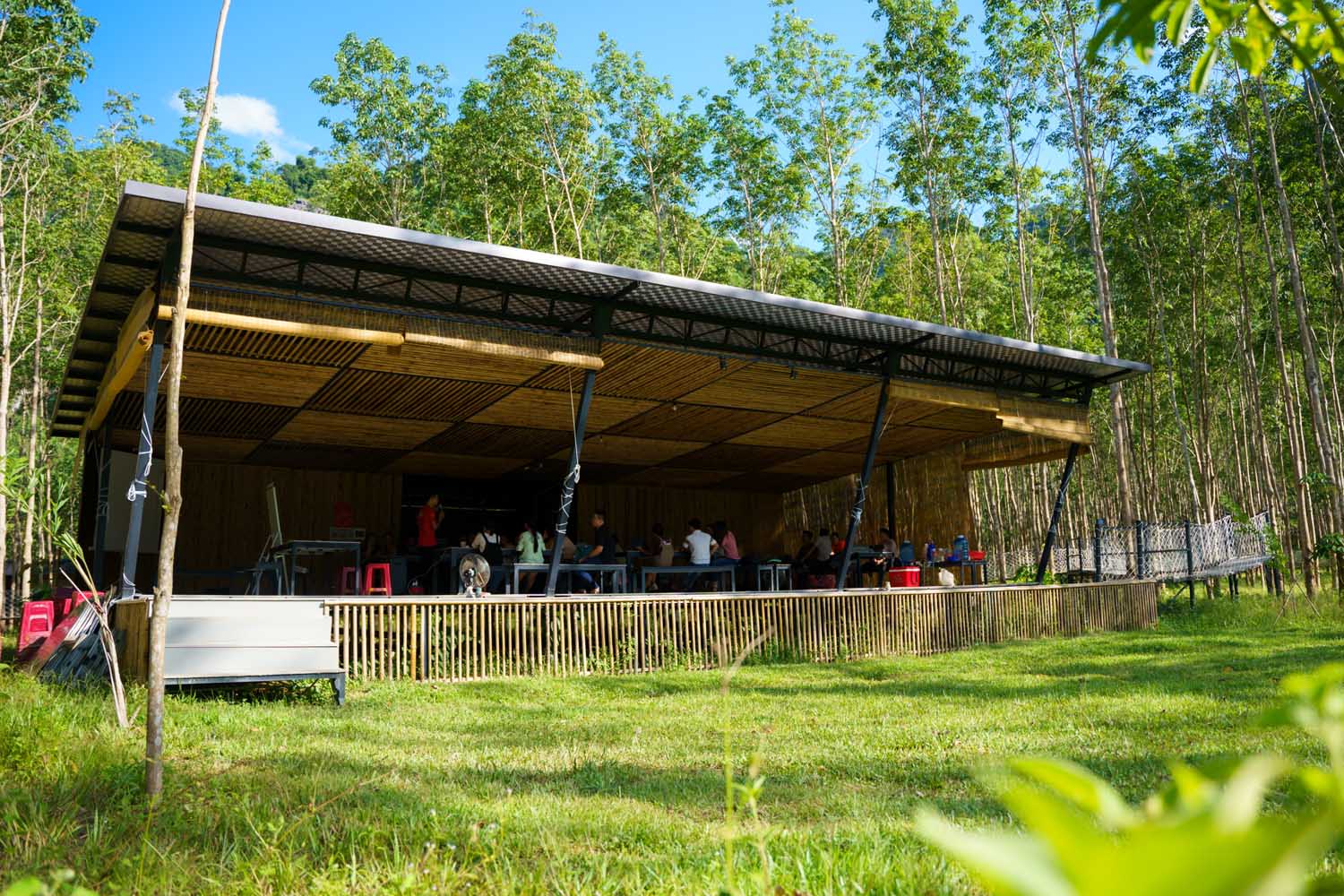
Common types of MICE tourism
Benefits of MICE tourism
Beyond participating in MICE tourism activities, travelers can also engage in surrounding tourism experiences, including sightseeing, enjoying local cuisine, joining traditional festivals, or trying adventure sports. This stimulates the growth of various industries such as restaurants, hotels, souvenir shops, tour guides, and many others while creating jobs and business opportunities for local residents.
Driving local economic growth
MICE tourism generates income for host destinations through venue rentals, hotels, restaurants, and auxiliary services, contributing to local economic growth. MICE service providers implement specially designed programs into hotel infrastructure as a way to ensure long-term value-added growth. The latest report from the Meetings Industry Council states that 85% of meetings in the U.S. are held at venues with accommodations, generating over 275 million room nights annually. MICE tourists spend significantly more than leisure travelers, with customers coming from industries such as IT, banking, pharmaceuticals, retail, and hospitality.
Enhancing the image and reputation of a destination
Large-scale, high-quality MICE events showcase the professional organization, modern infrastructure, and efficient working style of the host city or venue. This enhances the image and reputation of the destination in the eyes of both tourists and businesses.
Creating opportunities for networking and collaboration
One of the key benefits of MICE tourism is the opportunity for networking, exchanging knowledge, and collaborating with international experts, businesses, and organizations. By attending conferences, seminars, and international exhibitions, corporate employees can meet and learn from leading experts in their respective fields. Also, participating in MICE events promotes brands and products to potential customers worldwide.
MICE tourism also strengthens business connections among companies and fosters national interests and international cooperation. Conferences bring together top domestic and international experts and professionals, providing access to new technologies, exchanging ideas, building valuable business and professional relationships, and generating broader socio-cultural impacts.
Increasing revenue for tourism and related services
MICE tourism significantly boosts revenue for the tourism industry and related sectors such as hospitality, restaurants, transportation, and event management, driving economic development and diversification. MICE attendees require accommodation and dining services. Since some MICE events last for days or even weeks, hotels, food and beverage services, retail, transportation, and other tourism-related sectors benefit from the influx of visitors.
All MICE events require extensive planning and effort, which leads to profit generation for event producers and service providers. Studies show that MICE event attendees spend 17.5% more than regular leisure tourists. This is largely because companies cover most of the necessary event expenses, allowing attendees to have more disposable income for personal spending. The same study indicates that MICE-related events and destinations account for 54% of business travel, highlighting their impact on supporting local enterprises.
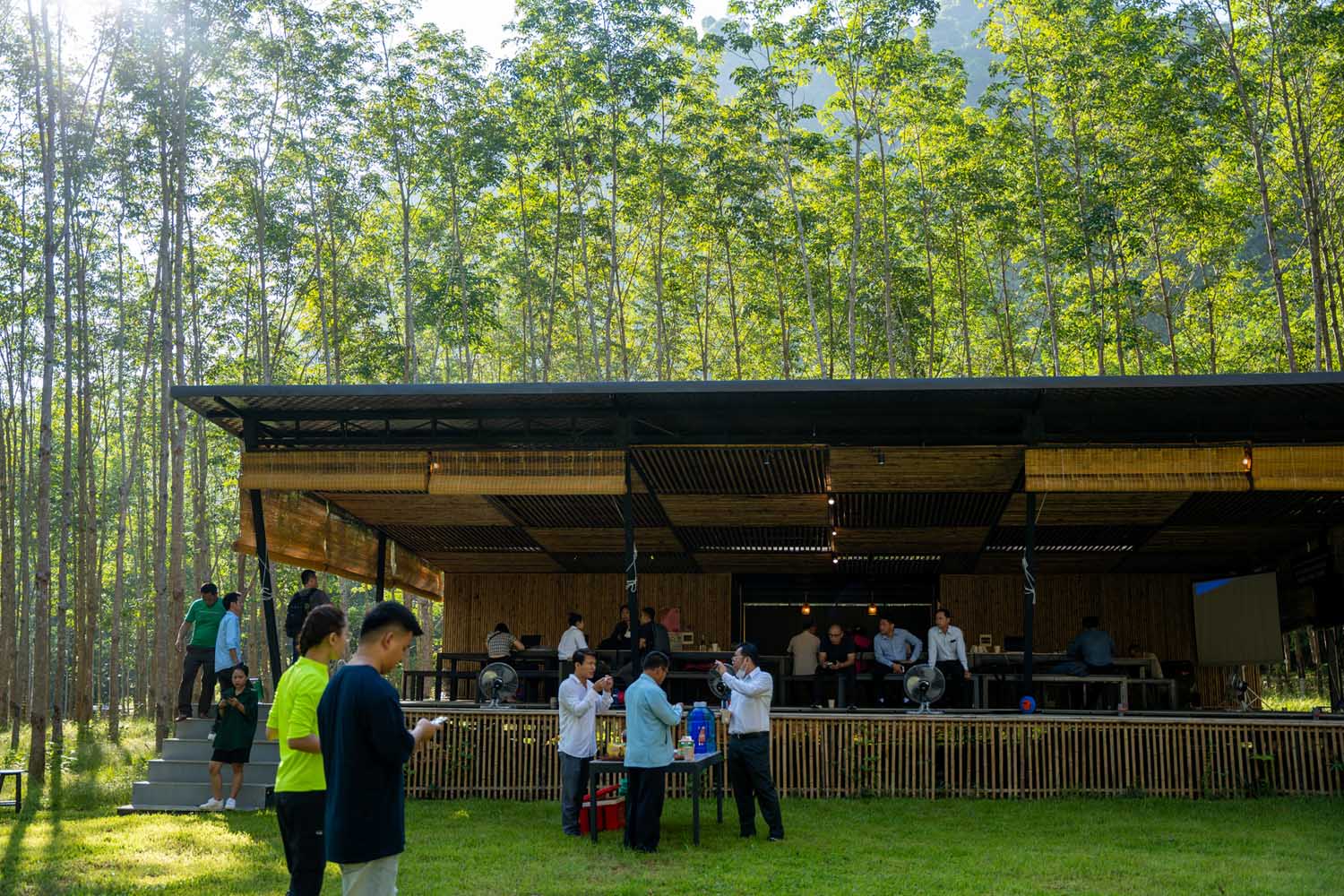
Key factors for organizing MICE tourism
When organizing MICE tourism (meetings, incentives, conferences, and exhibitions), several venue-related factors must be considered. Below are some key aspects to evaluate when selecting a MICE tourism venue:
Venue
Choosing the right venue is a crucial factor in ensuring convenience and comfort for attendees. The venue should provide adequate space and necessary facilities to meet the requirements of conferences, exhibitions, or events. Additionally, organizers should select locations with beautiful landscapes and fresh environments to create an enjoyable and comfortable atmosphere for MICE activities.
Infrastructure and technology
MICE tourism venues should have well-developed infrastructure, including roads, gas stations, restaurants, bars, and other amenities to meet customer needs. Moreover, the venue should feature conference rooms, auditoriums, or sufficiently large spaces to accommodate event demands. High-quality audio, lighting, display screens, and internet connectivity are essential to support presentations and related activities. Good infrastructure facilitates seamless information sharing and effective communication throughout the event.
Engaging programs
Designing diverse and engaging programs helps attract participants and create memorable experiences. Programs should incorporate outdoor activities, professional seminars, digital conferences, and team-building activities. One of MICE tourism’s key advantages is the ability to combine business with leisure and sightseeing. Venues should offer recreational activities such as entertainment centers, spas, shopping areas, and famous attractions so that guests can enjoy their free time after meetings and conferences.
Customer service
Excellent customer service is a vital factor in ensuring satisfaction and encouraging participation in MICE tourism. Attentive reception services, multilingual support, and enthusiastic staff help guests feel welcomed and comfortable throughout the event.

Leveraging the potential of nature-based MICE tourism
As more businesses and organizations seek innovative ways to connect with their target audiences through events, MICE tourism has become a crucial component of marketing and development strategies. Notably, MICE tourism is shifting towards nature-based experiences, emphasizing environmental connection and sustainability.
One of the strengths of nature-based MICE tourism is its ability to create unique experiences that foster a deep connection with the natural environment. Event organizers can design sightseeing programs, outdoor activities, and nature-focused seminars. This not only creates lasting memories for participants but also promotes environmental awareness. A notable example is the “Interprovincial Consultation on the Transboundary Management Framework between Phong Nha – Ke Bang and Hin Nam No National Parks,” organized by IUCN at Blue Diamond Retreat.
Additionally, event organizers should establish strong partnerships with local communities, environmental organizations, and sustainable tourism experts. Such collaborations enable the implementation of MICE tourism programs that respect and preserve nature while contributing to the sustainable development of the region.
In the future, nature-based MICE tourism can play a significant role in environmental conservation and restoration. Event organizers can lead the way in this strategy, creating unique and meaningful travel experiences while supporting the sustainable development of tourism and local communities.
However, to ensure a successful MICE event, organizers must clearly understand the purpose and target audience, tailoring event experiences to suit participants’ interests and needs. Selecting an appropriate venue is also crucial to maximizing the potential of nature. Choosing locations with distinctive landscapes, such as flower gardens, seas, or forests, will provide a refreshing natural setting and an exciting space for outdoor activities.
MICE tourism potential in Vietnam
According to Allied Market Research, the MICE industry in the Asia-Pacific region generated $229 billion in revenue in 2017 and is expected to grow at a compound annual growth rate (CAGR) of 8.6% to reach $441.1 billion by 2025. In 2018, conference organization services led the MICE sector in the Asia-Pacific, accounting for $159.4 billion, with a projected CAGR of 8.5%. Compared to neighboring countries such as Singapore, Thailand, and Malaysia, Vietnam holds significant potential for MICE tourism, thanks to its geographic advantages, infrastructure, landscapes, and cultural heritage.
Vietnam is located in Southeast Asia, a key hub for economic and cultural exchanges in the region. This strategic position allows the country to connect easily with other nations, facilitating the organization of international conferences, seminars, and exhibitions. Additionally, Vietnam has a well-developed transportation system, including road, rail, waterway, and air routes. This enables tourists to travel conveniently to and within Vietnam for MICE activities.
MICE tourism has specific requirements regarding infrastructure and related services. Currently, Hanoi and Ho Chi Minh City are prime examples of effectively leveraging their advantages. Alongside shopping, eco-tourism, and cultural tourism, MICE tourism is considered a key development focus of Ho Chi Minh City. Similarly, as one of the five best cities in Asia, Hanoi is frequently chosen to host international and regional events in combination with tourism.
Moreover, Vietnam boasts a long-standing and diverse cultural heritage, featuring numerous traditional festivals, unique cuisine, and distinctive folk arts. This creates an ideal environment for hosting activities and developing MICE tourism, allowing visitors to experience Vietnamese culture firsthand. Furthermore, Vietnam is renowned for its stunning landscapes and hospitable people. As a developing country, Vietnam’s economy is dynamic, with a constant and growing demand for conferences, training programs, exhibitions, product marketing, and experience-sharing events. Notably, pharmaceutical companies and foreign-invested corporations such as Honda and Toyota frequently organize training sessions at their factories and different market locations, often accommodating 500–1,000 participants per event.
Although the MICE industry has been present in Vietnam for a long time, it only expanded significantly in 2008 and 2009 when the economy reached new heights, and numerous bilateral trade agreements were signed. Today, Hanoi and Ho Chi Minh City are capitalizing on their advantages, while renowned tourist destinations such as Phu Quoc, Ho Chi Minh City, Da Nang, Hue, Nha Trang, and Hanoi are also recognized as ideal MICE destinations. Currently, thousands of businesses operate in the MICE sector in Vietnam, with an annual growth rate of 20%.
MICE tourism is experiencing robust growth in Vietnam and holds great future potential. The Vietnam National Administration of Tourism identifies MICE as a promising segment that the country can capitalize on and has included it in Vietnam’s strategic tourism development goals. However, Vietnam faces several challenges. One of the main obstacles is underdeveloped infrastructure. MICE travelers are predominantly high-end clients, requiring well-integrated, high-quality, and diverse facilities. Additionally, the workforce in the tourism industry, particularly in the MICE sector, remains insufficient and lacks the necessary expertise. These factors contribute to the relatively slow growth of MICE tourism in Vietnam despite a decade of development.
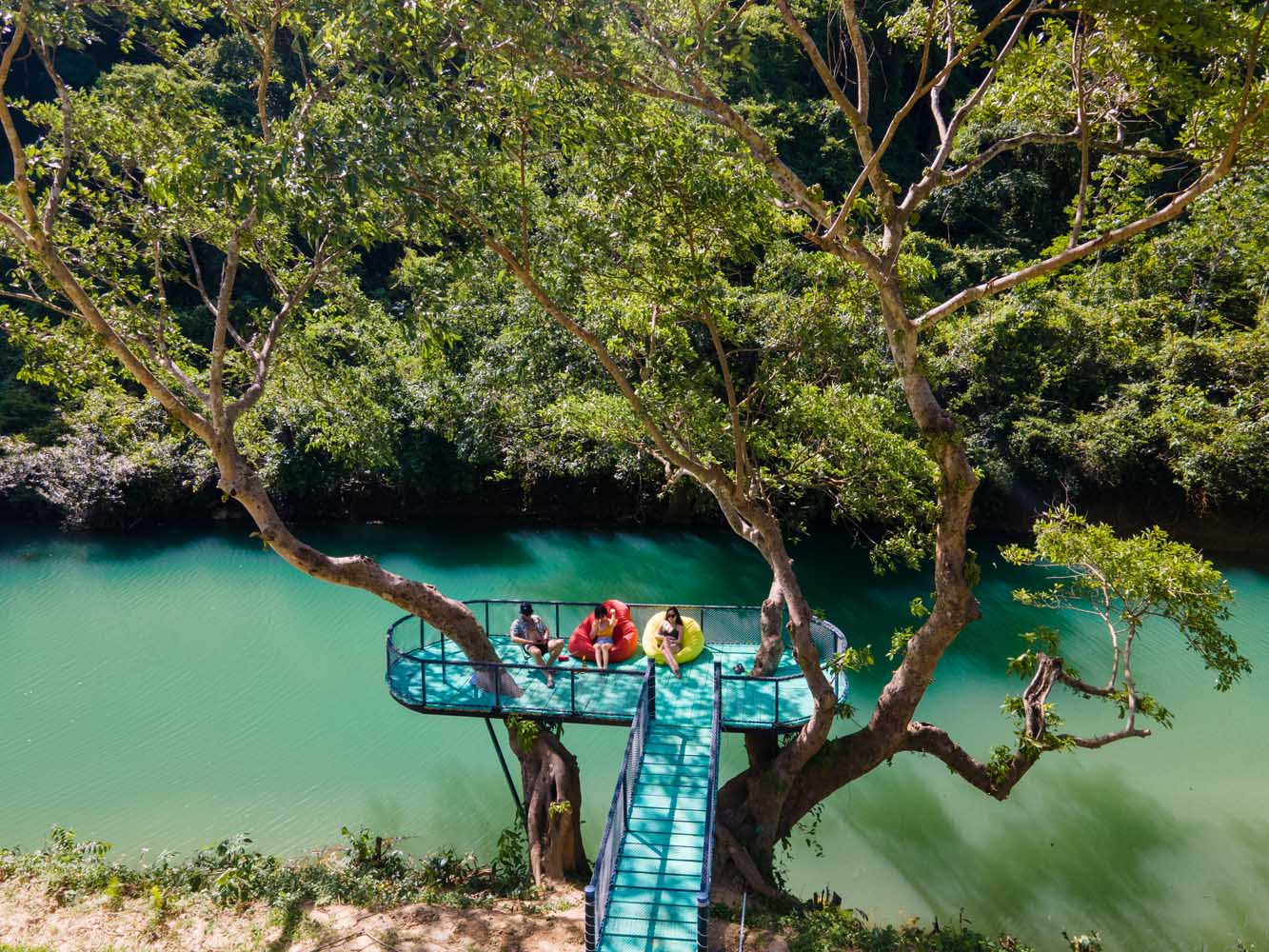
Quang Binh: A destination for MICE tourism
Quang Binh is renowned for its stunning natural landscapes, including the world-famous Phong Nha-Ke Bang National Park, a UNESCO World Heritage Site. With its impressive caves, underground rivers, and lush greenery, Quang Binh is an ideal location for MICE events. Companies or organizations seeking to combine business activities with nature experiences can consider Quang Binh as a destination.
Additionally, with its rich and diverse cave systems, Quang Binh offers a wide range of nature-based activities, such as adventure tourism, exploring caves, and mountain climbing. Corporate team-building activities conducted inside caves or along scenic trails can strengthen team cohesion and bonding.
Traveling to Quang Binh is becoming increasingly convenient. Visitors can reach the province via air, rail, and road. Furthermore, Quang Binh boasts a deep-rooted history and culture, providing an opportunity for delegates to immerse themselves in local traditions and customs. Combining business activities with visits to historical sites and cultural performances can enrich the overall MICE experience.
Moreover, Quang Binh has numerous hotels and infrastructure to support MICE programs. The province is home to various hotels and resorts, including those equipped with conference facilities for large-scale events. MICE events in Quang Binh not only generate direct economic benefits but also help promote the province’s tourism image, attracting more visitors and driving the growth of the tourism industry. At the same time, these events stimulate the development of related economic sectors such as hospitality, transportation, and trade.
One of the notable MICE events in Quang Binh was the “Interprovincial Consultation on the Transboundary Management Framework between Phong Nha-Ke Bang and Hin Nam No National Parks” organized by IUCN at Blue Diamond Retreat. During this conference, Oxalis Adventure (Vietnam) and Green Discovery (Laos) signed a Memorandum of Cooperation to organize cross-border tourism activities in the Phong Nha-Ke Bang and Hin Nam No National Park, contributing to high-quality visitor experiences while preserving natural values. In addition to business activities, delegates attending MICE events also had the opportunity to combine work with tourism, enjoying unique experiences at Blue Diamond Retreat. This reflects the modern MICE trend, fostering better connections between work and travel experiences, enhancing delegate satisfaction, and benefiting both the tourism industry and the local economy.

With these potentials, Quang Binh has the opportunity to become an attractive MICE destination in the future. However, the province still needs to continue investing in infrastructure, improving service quality, and promoting MICE tourism to achieve this goal.
Solutions for developing tourism in general and MICE tourism in Quang Binh
The Quang Binh Department of Tourism organized a tourism connection conference in 2022 and set tasks for 2023. In 2022, Quang Binh welcomed over 2 million visitors, including approximately 1,979,933 domestic tourists. Additionally, the department proposed several recommendations for tourism development in Quang Binh:
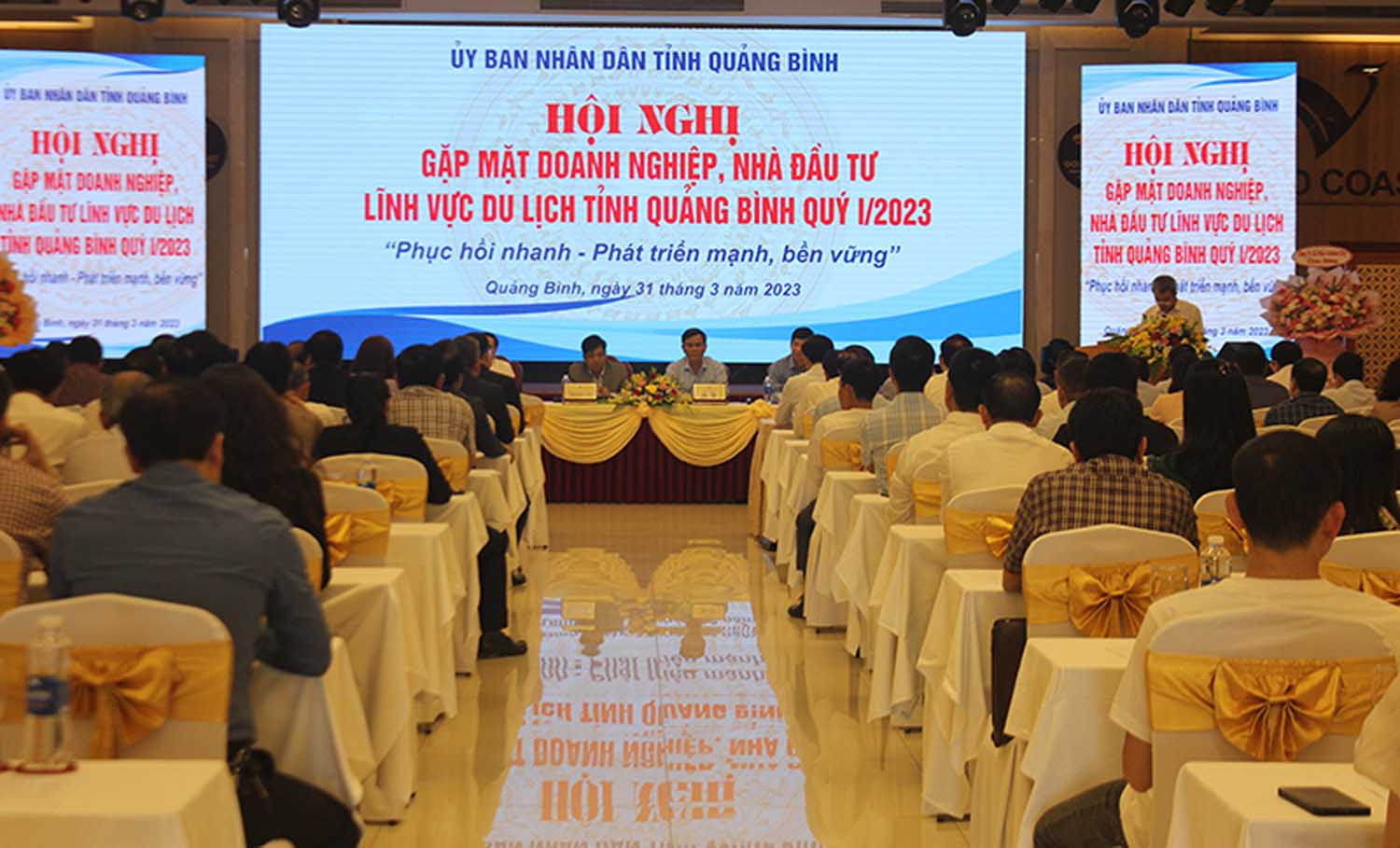
Upgrading tourism infrastructure:
Quang Binh has proposed and recommended the upgrading and investment in tourism infrastructure. The upcoming completion of the expressway through the province, the stable railway system with planned upgrades, and investments in airports, seaports, accommodation, entertainment, and shopping infrastructure are necessary. In particular, expanding and upgrading Dong Hoi Airport is one of the key priorities.
Removing barriers for sustainable tourism development:
The People’s Committee of Quang Binh Province organized a business and investor meeting in the tourism sector for the first quarter of 2023 under the theme “Rapid Recovery – Strong and Sustainable Development.” The conference aimed to facilitate discussions, listen to the concerns and aspirations of tourism businesses in Quang Binh, and address challenges to ensure sustainable tourism development.
Building and upgrading infrastructure:
Ensuring a professionally trained workforce in the tourism sector is crucial for providing high-quality and professional services to meet the needs of MICE tourists. To attract conferences and seminars, it is essential to invest in modern convention centers that meet space, equipment, and service quality requirements. These facilities should support MICE tourism, beach tourism, resort tourism, river tourism, cultural and historical tourism, community-based tourism, and festival tourism.
Enhancing promotion and improving tourism products:
Quang Binh needs to strengthen its marketing and promotion efforts for tourism events and destinations. Additionally, creating unique and attractive tourism packages that combine conferences and seminars with visits to Quang Binh’s distinctive attractions will further highlight the province’s appeal to MICE travelers.
With its potential and advantages, Quang Binh has become an attractive MICE destination. The development of MICE tourism in the province not only brings economic benefits but also enhances its image and attracts more visitors. Successful MICE events have contributed to positioning Quang Binh as a prominent tourism destination in Vietnam. However, the sustainable development of tourism in general and MICE tourism in particular requires investment in infrastructure, the resolution of challenges, increased marketing and promotion, the development of unique MICE tourism products, and improved service quality. These efforts will help Quang Binh attract more tourists and achieve sustainable tourism growth in the future.
FAQs
What are the benefits of MICE tourism for businesses?
Participating in MICE events helps businesses strengthen relationships with clients, partners, and suppliers through meetings, exhibitions, and conferences. It also provides opportunities to showcase products, services, and new ideas, attracting attention and increasing sales. Additionally, MICE tourism enhances a company’s reputation and credibility within the industry while offering networking opportunities. For employees, MICE events serve as a platform for professional development, learning from industry experts, sharing experiences with colleagues, and enjoying a mix of business and leisure, helping them relax and recharge after intense work periods.
What are the benefits of MICE tourism for local communities?
MICE tourism generates significant economic benefits for local communities by attracting visitors, increasing revenue for tourism businesses and local services, and creating job opportunities. Additionally, it helps promote the destination’s image and reputation to a global audience.
Can MICE tourism develop in Vietnam?
Vietnam has great potential and is emerging as a growing MICE tourism destination. This development is driven by the country’s economic and cultural growth, along with government investments and efforts to promote the tourism industry. Major cities such as Hanoi, Ho Chi Minh City, Da Nang, and Nha Trang have become popular MICE destinations. Particularly, Ho Chi Minh City and Hanoi are regarded as the top locations for MICE tourism in Vietnam, thanks to their well-developed infrastructure, strategic locations, beautiful landscapes, and high-quality hotels and conference centers that cater to the needs of MICE travelers.
Why is MICE tourism important for MICE service providers?
MICE tourism is essential for MICE service providers as it offers investment and collaboration opportunities, helping businesses enhance their competitiveness and growth potential. MICE events are typically held in high-end hotels and resorts, utilizing premium services. This increases revenue for MICE service providers and contributes to the economic development of the region.
How can MICE tourism promote local tourism development and sustainability?
MICE tourism supports local tourism development and sustainability by incorporating eco-friendly and sustainable tourism practices. These include using recycled materials in exhibitions and conferences, offering educational activities to raise awareness about environmental protection and wildlife conservation, and encouraging visitors to use local products and services.


